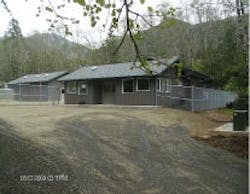Oregon Sanitary District In Need of a Small Footprint and Increased Capacity
| Related Searches from WaterInfoLink.com MBR System | Oregon Department of Environmental Quality | Denitrification | Enviroquip | Filtration |
In April 1966, the Oregon Department of Environmental Quality (DEQ) notified the county of the need for a wastewater treatment system in Arch Cape. The community of Arch Cape began their search for an acceptable wastewater treatment system given their land’s inability to accommodate additional growth. This DEQ notification resulted in a 10-year moratorium on the issuance of county building permits in Arch Cape.
In 1975, a collection system and wastewater treatment facility was built in an effort to meet sanitary standards required by the DEQ. After 25 years of operation, studies showed that the existing plant had capacity and treatment limitations and needed to be upgraded; specifically, in periods of high stream flow, the stream became vulnerable to detrimental chlorine and ammonia loads.
In 2003, the Arch Cape Sanitary District (ACSD) had a facility plan completed based on membrane bioreactor technology. After extensive research done by both the owner and the engineer, Curran McLeod of Portland, Ore., the Enviroquip MBR system was selected based on experience in the Pacific Northwest, ease of operation and the simplicity of the system.
The upgrade of the treatment facility was completed in May 2009 with the Phase 1 design offering a peak daily flow of 336,000 gal per day (gpd) with a peak instantaneous flow of 586,000 gpd. The Phase 2 expansion will include adding two more Kubota membrane units into the membrane tanks from P1 (AAF of 0.338 mgd, PDF of 0.677 mgd).
The construction upgrade only cost the community a total of $4,125,000, which included $1,375,000 in grants to the district. Schneider Equipment was the installing contractor. The Arch Cape MBR WWTP is the eighth operational Enviroquip MBR System in the state of Oregon.
This MBR plant is a simple two-stage design with denitrification in an anoxic zone and nitrification, BOD and TSS removal and filtration occurring in the membrane zone. The existing concentric circle plant was converted into an equalization zone, anoxic zone and two digester zones without having to modify the tanks. Two new membrane tanks were built adjacent to the donut plant. Effluent from the MBR is either discharged into the Arch Cape Creek (winter) or used for land irrigation (summer).
